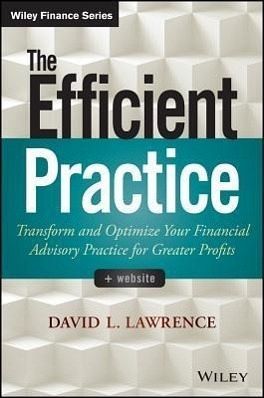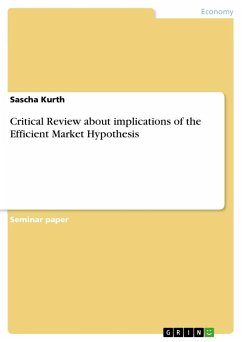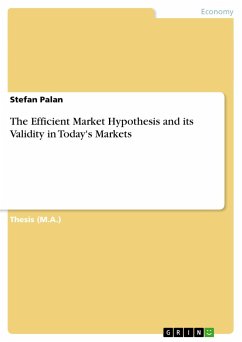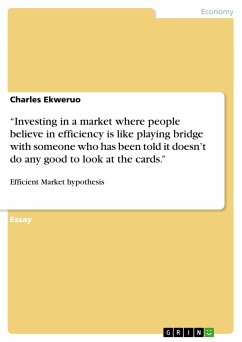
The Efficient Practice
Versandkostenfrei!
Versandfertig in über 4 Wochen
43,99 €
inkl. MwSt.
Weitere Ausgaben:

PAYBACK Punkte
22 °P sammeln!
"David Lawrence starts with the truth: many financial advisory business owners know how to create a financial plan but don't know how to run a business. He then goes on to create what just might be the next bible of business management, telling us how to manage people, technology and workflows. If you've hit a profitability ceiling with your practice, this is the book for you." --David J. Drucker, MBA, CFP(R), Partner, Virtual Office News, LLC, creator of the Technology Tools for Today Newsletter and Conferences A holistic approach to efficiency, productivity, and profitability for financial f...
"David Lawrence starts with the truth: many financial advisory business owners know how to create a financial plan but don't know how to run a business. He then goes on to create what just might be the next bible of business management, telling us how to manage people, technology and workflows. If you've hit a profitability ceiling with your practice, this is the book for you." --David J. Drucker, MBA, CFP(R), Partner, Virtual Office News, LLC, creator of the Technology Tools for Today Newsletter and Conferences A holistic approach to efficiency, productivity, and profitability for financial firms Financial firms, author David L. Lawrence argues, don't recognize that the cause of stagnating revenue and an inability to reach growth targets is often caused by the owners themselves. In The Efficient Practice: Transform and Optimize Your Financial Advisory Practice for Greater Profits, Lawrence explores the tools and techniques needed to bring firms above their current revenue ceiling, achieving the highest possible levels of efficiency and profitability. The Profit-Driven Architecture model provides a visual roadmap for viewing the operational structure of a financial practice. It takes readers all the way from basic management efficiencies to technology best practices to proven branding strategies. Using this model, the book will: * Provide a concrete way of understanding and improving the interrelationship of different parts of the operations of a financial advisory firm * Find ways to enhance organizational processes that increase the profitability of the business * Increase capacity and practice value to drive business growth and provide a framework for succession planning For many financial advisors, establishing a meaningful client base and earning enough money to make ends meet inevitably become the unstated long-term financial goals of the business. But many financial advisory professionals are unaware of the improvements to their organizational processes that can help them create a mature business infrastructure and a company that can grow far beyond their initial vision of success. David L. Lawrence guides financial professionals through the processes that can propel your practice forward and help you realize your full earning potential.













